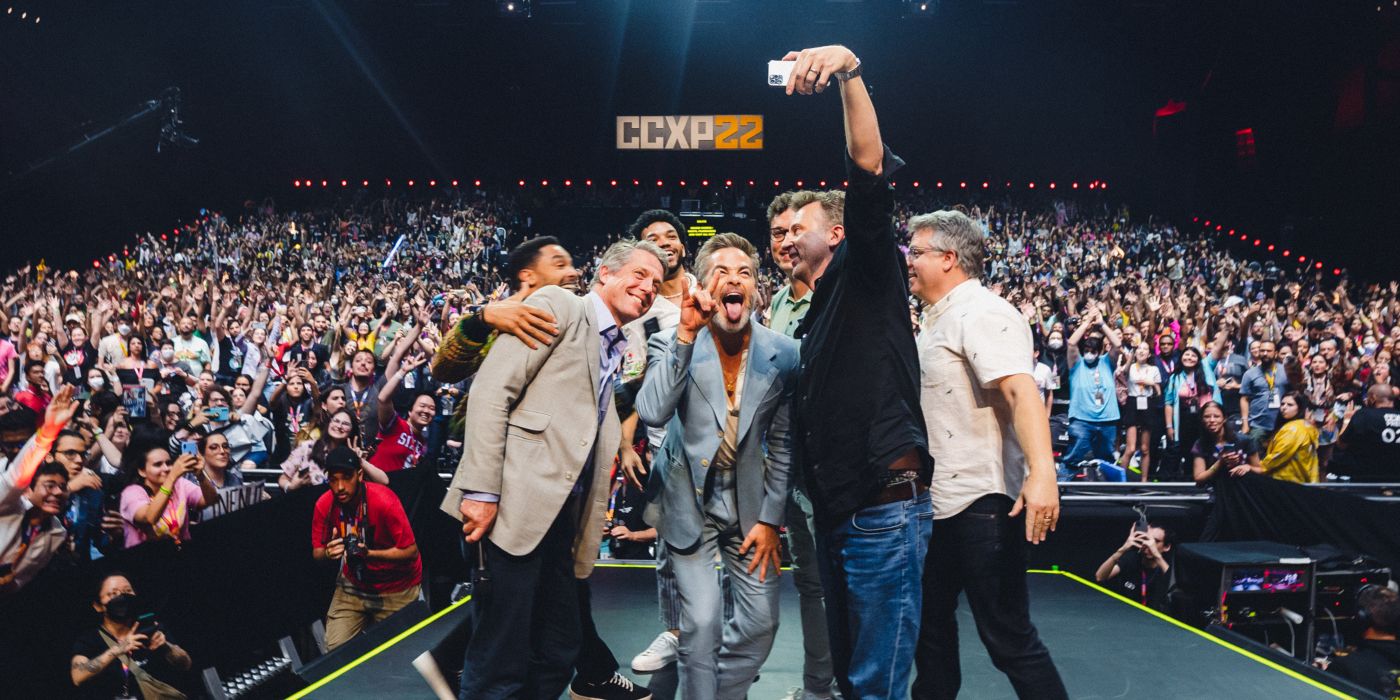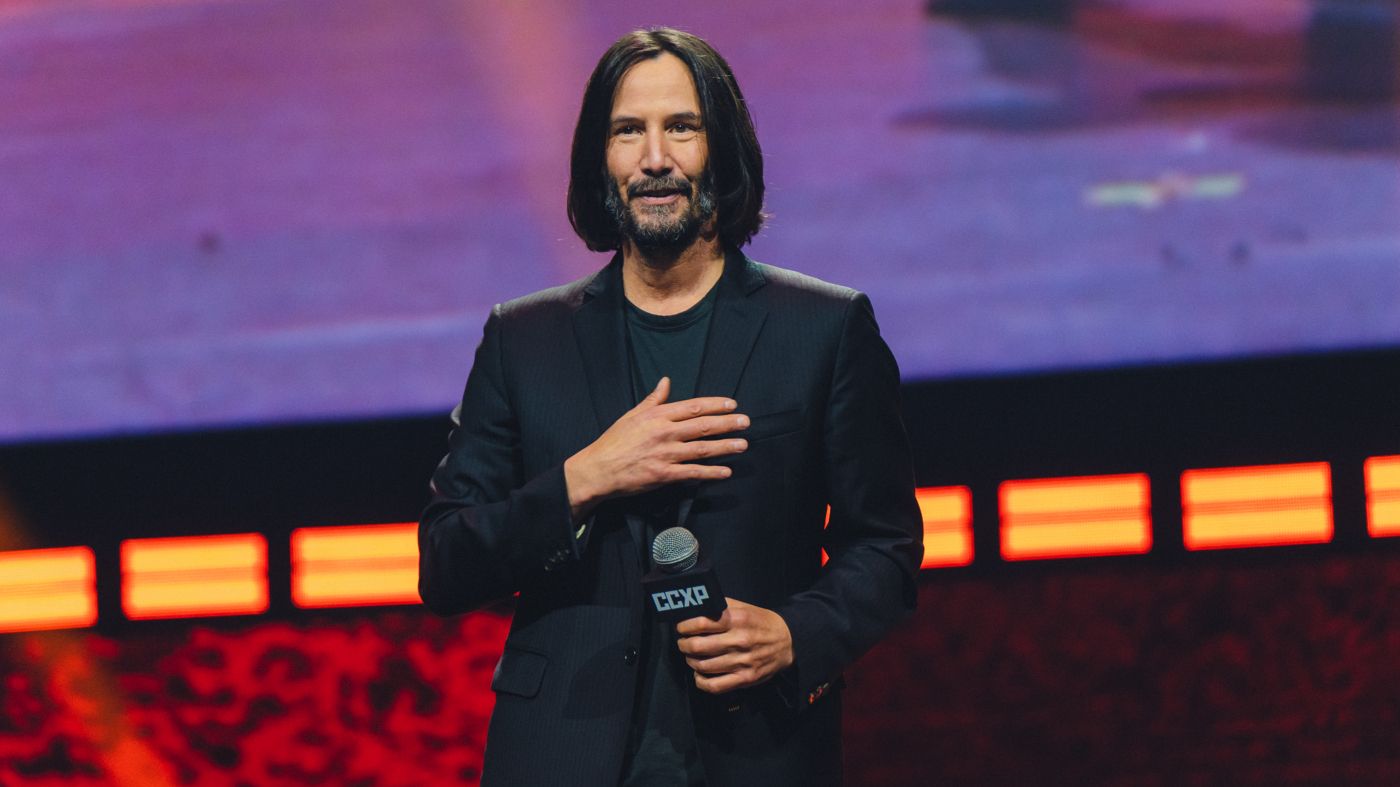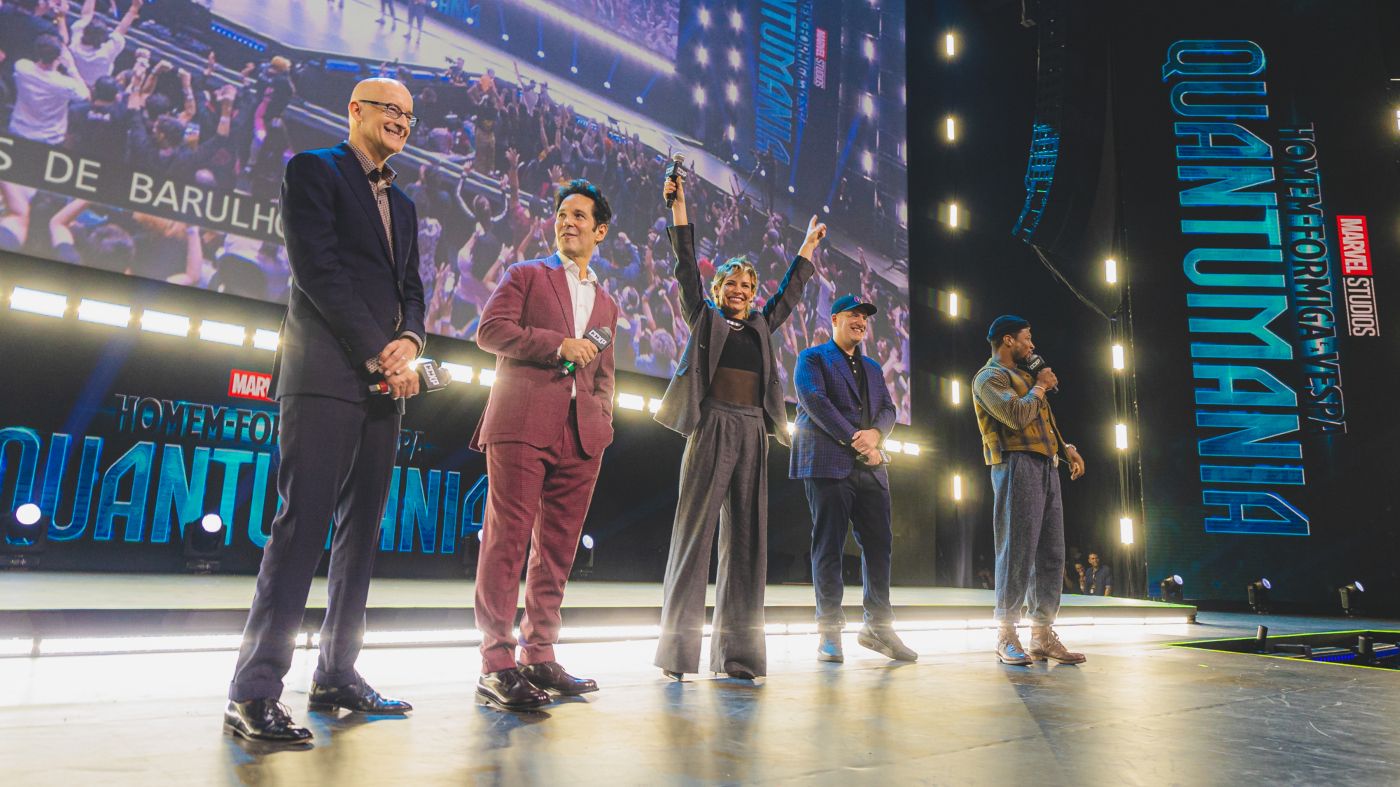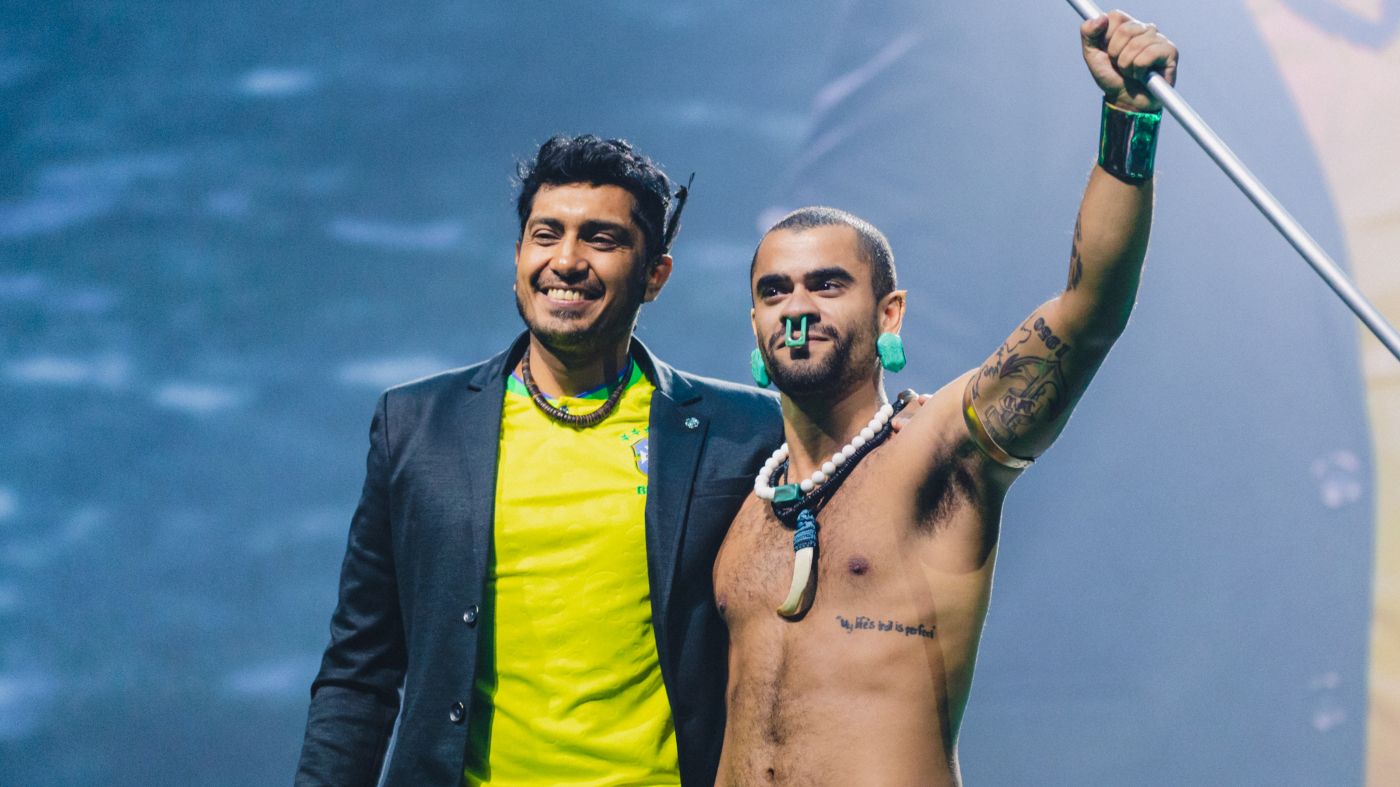Every year, in the exotic and faraway lands of Brazil, something epic takes place. You might not know much — or even anything — about it, but it should definitely be on every pop culture fan’s radar. I’m talking about Comic Con Experience, of course. After three years (due to the pandemic), the Brazilian convention is back, bigger and better than ever. Over four days in the first weekend in December, CCXP brought most of Hollywood's best to São Paulo and revealed a lot of awesome stuff, such as special looks into John Wick 4 — with Keanu Reeves himself on stage — the new trailer for The Last Of Us and Blue Beetle's first poster, among other surprises.But why is CCXP still not considered part of the mainstream convention circuit? It should be! Over the years, it has steadily grown into one of the most important and prestigious events of the year, used by the studios as a way of promoting present and upcoming projects, as well as celebrating the classics. The con itself is also unlike any other in the circuit, drawing thousands of fans to what can easily be described as a pop culture amusement park built in one of Latin America's biggest cities. What really makes it so special?
When Does CCXP Take Place?
This year, CCXP was held from December 1-4. The con is strategically planned to take place at the end of the year, in the window between Thanksgiving and Christmas. This was a vacant window in the convention circuit, as the industry focused on its December releases and, then, slowly crawled into the holidays. Now, though, CCXP has competently filled that vacuum, using this opportunity to keep engines hot six months after San Diego Comic-Con, which usually happens in July.
It may seem pretentious to say it, but that — along with the event's very particular design, as we'll see shortly — makes CCXP likely the second most important date in the convention circuit, certainly big enough to attract names such as Marvel's Kevin Feige, who came down to reveal new trailers for Guardians of the Galaxy, Vol. 3 and exclusive looks into Ant-Man and the Wasp: Quantumania. And he didn't come alone, mind you: he brought along the movie's main cast, including Paul Rudd, Evangeline Lilly, and Jonathan Majors, as well as director Peyton Reed.
It's no exaggeration to say that this year's Marvel panel was a taste of what usually happens at SDCC when Mr. Feige goes crazy with the announcements. And that was his second time at CCXP, as he had already been here in 2019 along with Kathleen Kennedy and the cast of Star Wars: The Rise of Skywalker, who had come to promote it. So how did a convention so far away from where the magic always happens get so big? Well, that's quite a story...
CCXP Puts a Brazilian Twist on the Fan Convention Model
The first CCXP was in 2014, and, while smaller, it was already showing potential with a convention model based on attracting attention to studios and media giants. Back then, for example, Marco Polo, one of Netflix's first original series, was still its main tentpole, promoted in a stand that called the public's attention to the future of the streaming service. The idea of streaming growing into what it is today seemed kind of alien all those years ago, and the Brazilian con was a huge help in setting up Netflix as the leviathan it grew into, helping establish it in the huge Latin American market.
By the way, do you actually know where Brazil is? Don't confuse us with our brothers from Argentina — our capital is not Buenos Aires, okay? It's also not São Paulo, either, although this is Latin America's second-largest city, after Mexico City. But while our Mexican kindred may still get some attention due to their proximity to the United States, it used to be difficult for us, all the way down here in the South, to get something. We needed something big, and now we got it.
In 2014, our partners at Omelete decided to expand their operations and bring, well, a Comic-Con experience to Brazil, and, thus, CCXP was born. The journalists over there are all battle-hardened professionals who've been to countless editions of SDCC themselves, so they knew very well the potential a convention like that had for the Brazilian audience. We had minor conventions, too, but nothing on that scale. It began with only half the space it uses today, and brought Jason Momoa, Sean Astin and John Rhys-Davies to talk about their careers. In the following years, it expanded in size, doubling its area and attracting not only local stores and businesses but also big studios and producing companies. Household names, such as Warner, Disney, and Prime Video, now have their own huge stands on the con floor, as well as hosting their own panels in the main hall, Thunder Stage.
None of that would've been possible, though, if the local fans hadn't embraced the project and concept of CCXP the way they did. When artists come down, they usually say that "Brazilian fans are the best," and while that may be said everywhere they go, it just rings different here. Collider's own Steve Weintraub captured some of that magic when the cast of Dungeons & Dragons: Honor Among Thieves came to Omelete Stage, an interview space on the con floor. Present were Chris Pine, Justice Smith, Regé-Jean Page, and Hugh Grant, along with writer-directors Jonathan Goldstein and John Francis Daley and producer Jeremy Latcham.
To maximize this reception by the audience, the organizers of CCXP try to mix a seasoned journalist from Omelete, especially Marcelo Forlani and Marcelo Hessel, with local influencers and public figures, such as Globo presenter Marcos Mion, YouTuber Aline Diniz (a former Omelete journalist herself), actress Maria Bopp, and CNN Brasil's Mari Palma. The public doesn't show up for big panels just for the content alone, but also to watch the people they see on TV every day do what they do live on stage, talking to big Hollywood stars.
The pandemic was the only period CCXP didn't take place physically. Still, it adapted and launched CCXP Worlds, a virtual alternative complete with studio panels and exclusive content, with an expanded Artist's Valley with artists from the whole world selling their art virtually. The physical model is also in expansion, with CCXP Tour having happened once in Recife, in the Brazilian state of Pernambuco, in 2017, and CCXP Cologne taking place in the German city, in 2019.
What Does CCXP Do Differently From Its Competitors?
The venue for CCXP, São Paulo Expo, is not a central one, but it is close to public transportation and easily accessible by car. It might be far from the city's center, known for its beautiful architecture and skyscrapers, but, for what CCXP aims to do, that's a good thing. When you enter the venue, it's like crossing a threshold into a different dimension, a place completely unlike anywhere else in Brazil.
Every major studio from Hollywood is present with its own huge stand, all of them filled with attractions, rides, activations, and stores. To illustrate this, Paramount's Dungeons & Dragons stand could easily fit around 12 SDCC booths, and it was complete with countless photo ops. Prime Video and Netflix did something even bigger. The first built a Balrog and a Numenorean ship from Lord of the Rings: The Rings of Power and a miniature Vought Tower from The Boys, complete with flash mobs to incite public attention, while the latter built a whole block of activations based on their most famous shows, like Stranger Things, Squid Game, Sandman and Wednesday, and a photo-op based on an ironical Brazilian saying about the streamer, "Netflix, pay for my therapy" (but in Portuguese, of course). Opportunities like this are golden for any fan's Instagram, and it helps to promote the series and companies for free, too. Local businesses are also present, from action figure giant Iron Studios to small local shops. For example, local P2P company Mercado Livre built a literal medieval castle populated with small businesses. It was impossible to miss, so everyone present on the con floor inevitably went inside at least once.
The heart and soul of CCXP, though, is the Artist's Valley. Arguably the biggest in the convention circuit, it's located at the very center of the pavilion. Even for those who don't care much for art, it's nearly impossible to not buy something there. But what's special about it is that it puts local artists side by side with comic book legends. This year, Jim Starlin and Yanick Paquette shared the space with Brazilian names, such as comic strip artist Carlos Ruas and graphic novelist Vitor Cafaggi, and aspiring artists from all around the country. And, while local artists are used to the warmth of the Brazilian audience, CCXP never fails to impress foreign legends who come down.
All that happens inside the CCXP compound. It begins with Spoiler Night, a soft-opening style event just for the press, influencers, and those who hold special credentials that give them access. There are different kinds of badges, some focused on the fan experience, some that favor the business side of the event, and, of course, regular day tickets. But, regardless of what credentials you have, CCXP always has something for everyone. It doesn't matter what kind of fan you are, every fandom meet and co-exist during these four days in São Paulo, giving everyone a place in this vast multiverse.




